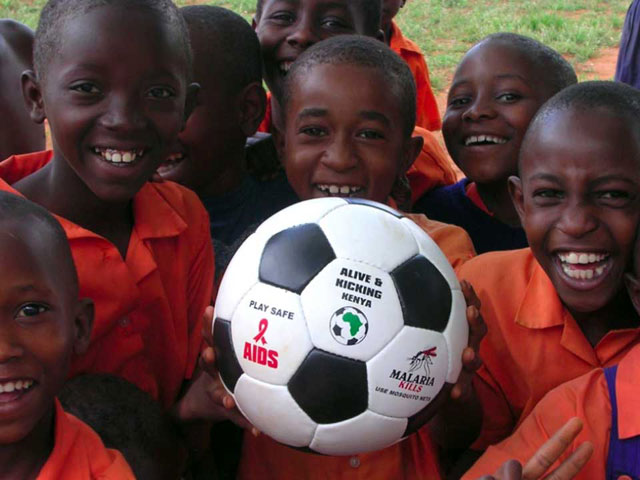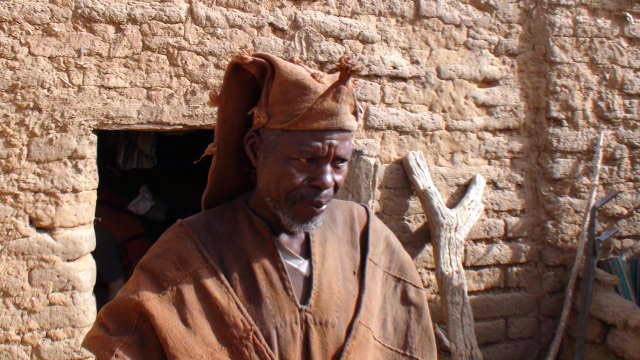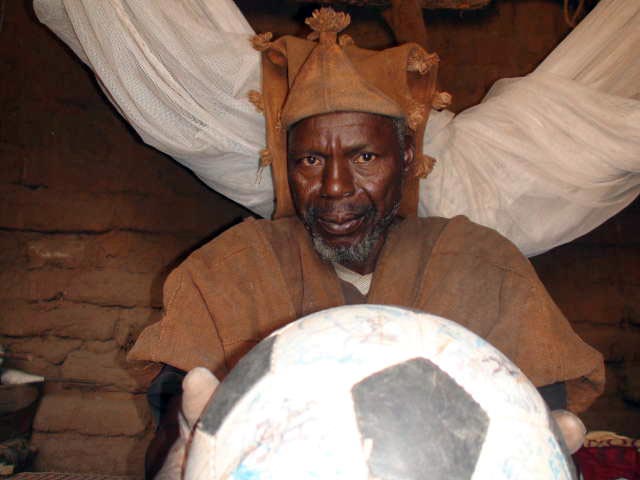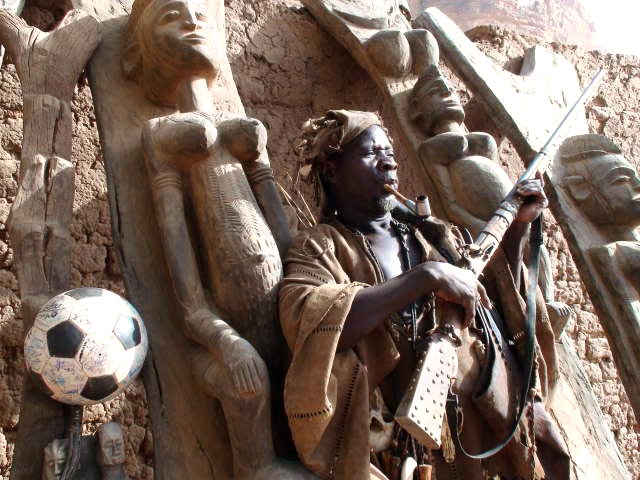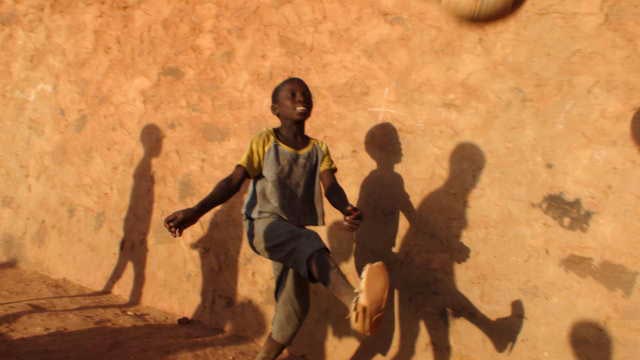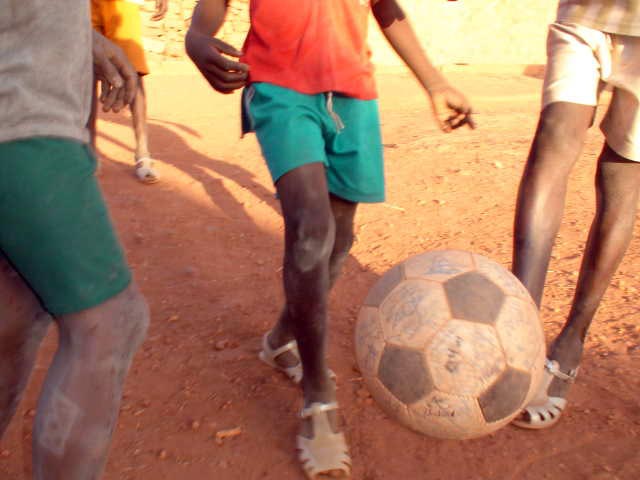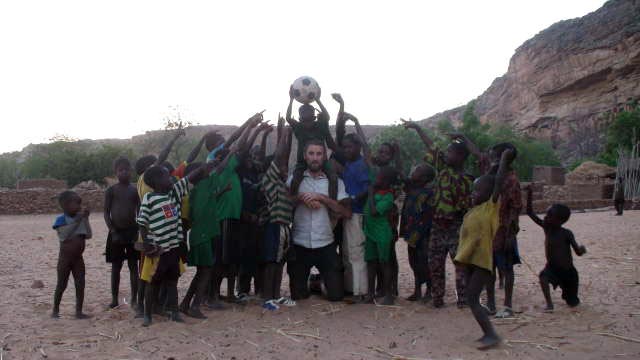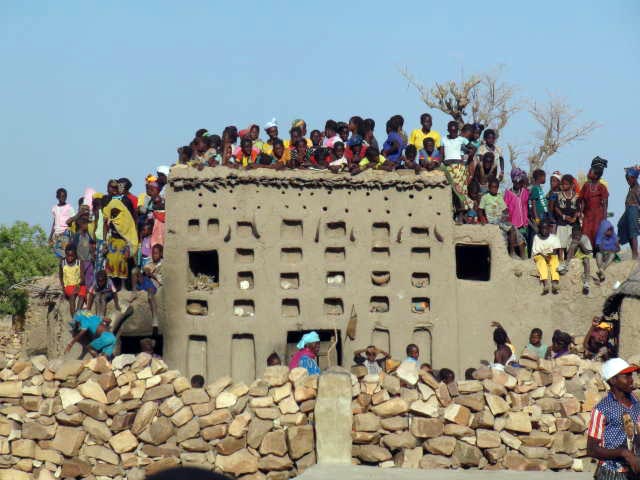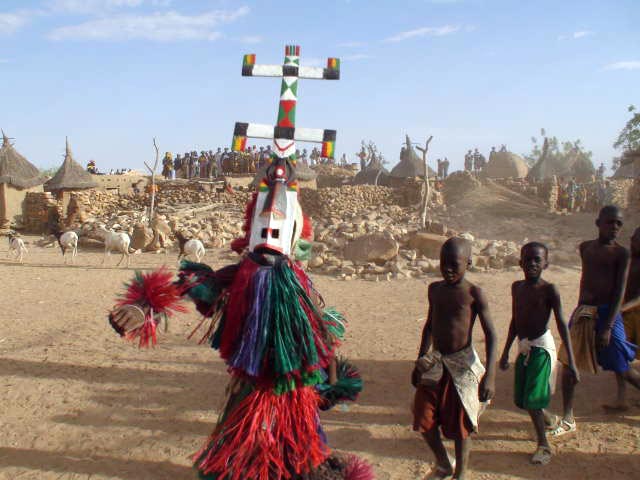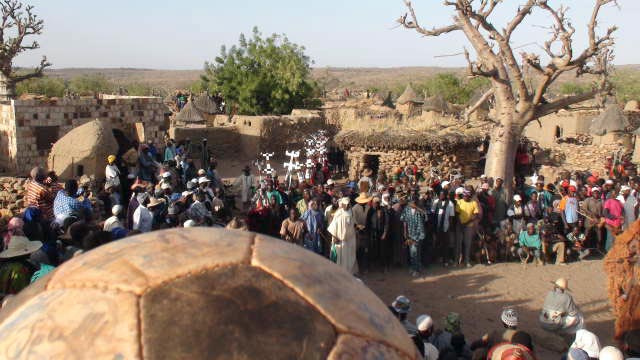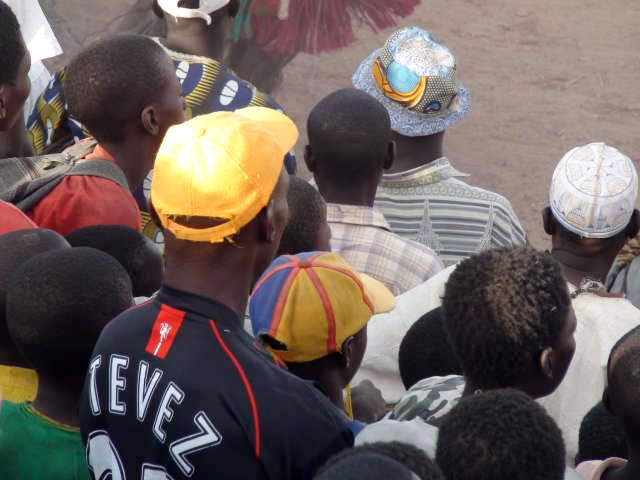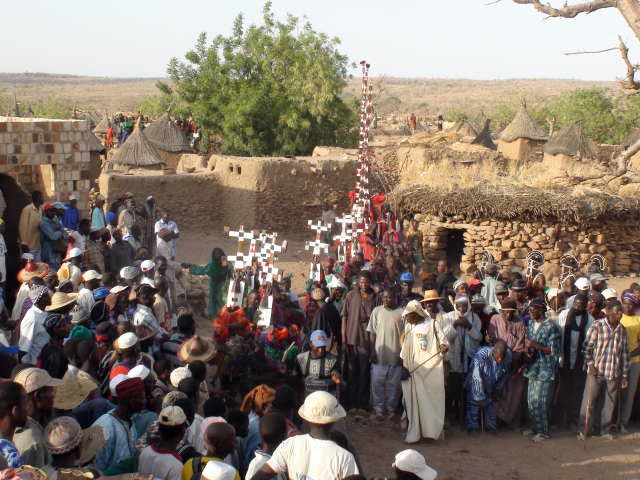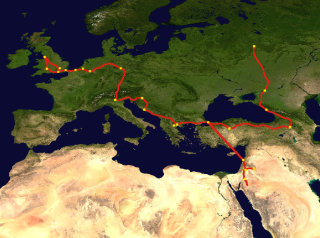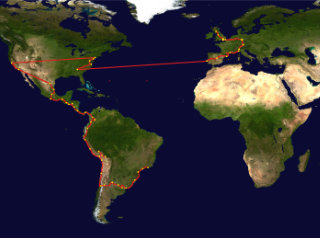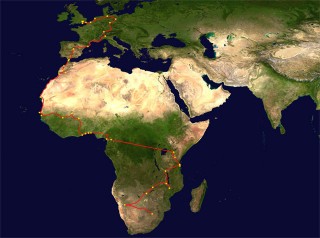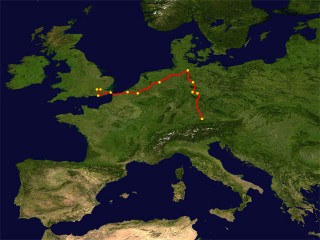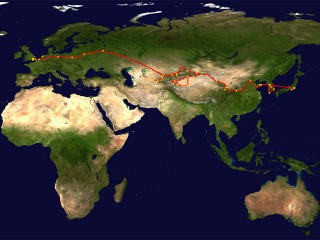We are invited into the home of a very respected local fetishman, a marabout of the animist tradition. A small mud building in the middle of Teli awaits out presence. We are welcomed and Phil presents The Ball to him.
Our Dogon guides translate as Phil explains about The Ball. The fetishman holds, examines and feels The Ball — then he cleans and places a mat onto the dusty floor in front of him. The plaited mat is like a map and, as he places it on the floor, he draws lines and symbols in the dusty ground around it.
He throws cowrie shells on to the mat and interprets their meaning based on where they come to rest. This mat and these shells form relationships beyond our comprehension. After several rounds of throws and much speaking to himself, he is ready to speak to us all.
“There will be a happy and a good end to the tour. It will finish well. You will make it to Johannesburg and it will be a happy time.”
Later, another animist, a local hunter, rolls The Ball up and down his ceremonial totem polls, lingering over the chest areas of each female statue – almost as if he is listening to them, perhaps using The Ball as a medium.
“The Ball is special” he says.
Once the funeral ceremony that we witness in a small village on the road to Tely comes to a close, we have just enough time before we head onwards to organise a quick game of football in the street with some of the Dogon children.
As is so often the case, it is the local children who warm most quickly to The Ball. We try and explain as best we can that The Ball is heading for the World Cup in South Africa — as usual, this brings big smiles to everyone’s faces.
Every kick takes The Ball a little further towards its goal. Every person who kicks it gives The Ball added momentum. And every place The Ball passes through receives some memory of that moment. This may be a game — but it is most definitely not a zero-sum game.
We jump in Moussa’s right-hand drive Toyota Landcruiser and head for Dogon Country. Our first stop is a real surprise and a real treat. Moussa leads us into a tiny village where we are fortunate enough to witness the funeral ceremony for the village’s much respected leader.
As cultural outsiders, we’re not sure what’s going on in the ceremony, so the best we can do is to show you some pictures and let them speak for themselves.
Football may indeed be a universal language, but it is times like this that make us wish we had a common spoken language to help us understand other cultures better than we do.

